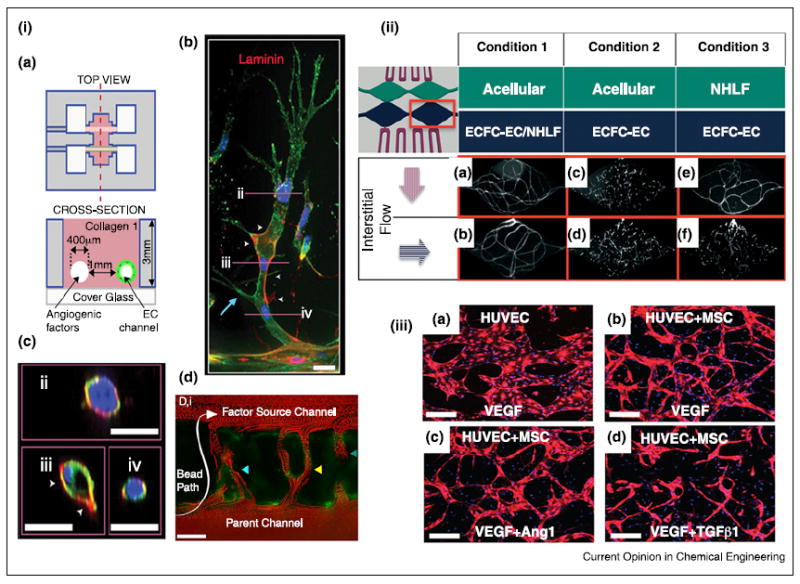Figure 2.

3D models for angiogenesis. (i) Formation of endothelial sprouts and perfusable neovessels in a 3D microfluidic device. (a) Device schematic. Two parallel channels are in a 3D collagen matrix, One channel is coated with ECs and the other channel is perfused with angiogenic factors. (b) Mature sprouts stained for laminin (red), and (c) cross-section of sprouts. Scale bars are 25 μm. (d) Neovessels perfused with 3-μm red fluoescent beads. Scale bar is 100 μm. (ii) Human capillary network formation, confirmed by CD31 staining, depends on interstitial flow-driven communication between endothelial colony forming cell-derived endothelial cells (ECFC-ECs) and normal human lung fibrolast (NHLF). (a,b) Vessel networks developed when ECFC-Ecs and NHLFs were co-cultured regardless of the direction of the interstitial flow. (c,d) In the absence of NHLFs, ECFC-ECs failed to form vessel networks in any directional flow, (e) Vessel network is formed when the interstitial flow direction allows for ECFC-ECs to be exposed to NHLF soluble factors. (f) No significant vessel network formation occurred when the interstitial flow direction was arranged to restrict ECFC-ECs exposure to NHLF soluble factors. (iii) Generation of microvascular network in the presence of bone marrow derived MSCs and HUVEC under growth factor stimulation. Scale bars are 200 μm.
(i) Reproduced from [18••] with permission from the National Academy of Sciences; (ii) reproduced from [21] with permission from the Royal Society of Chemistry; (iii) reproduced from [25] with permission from the Royal Society of Chemistry.
